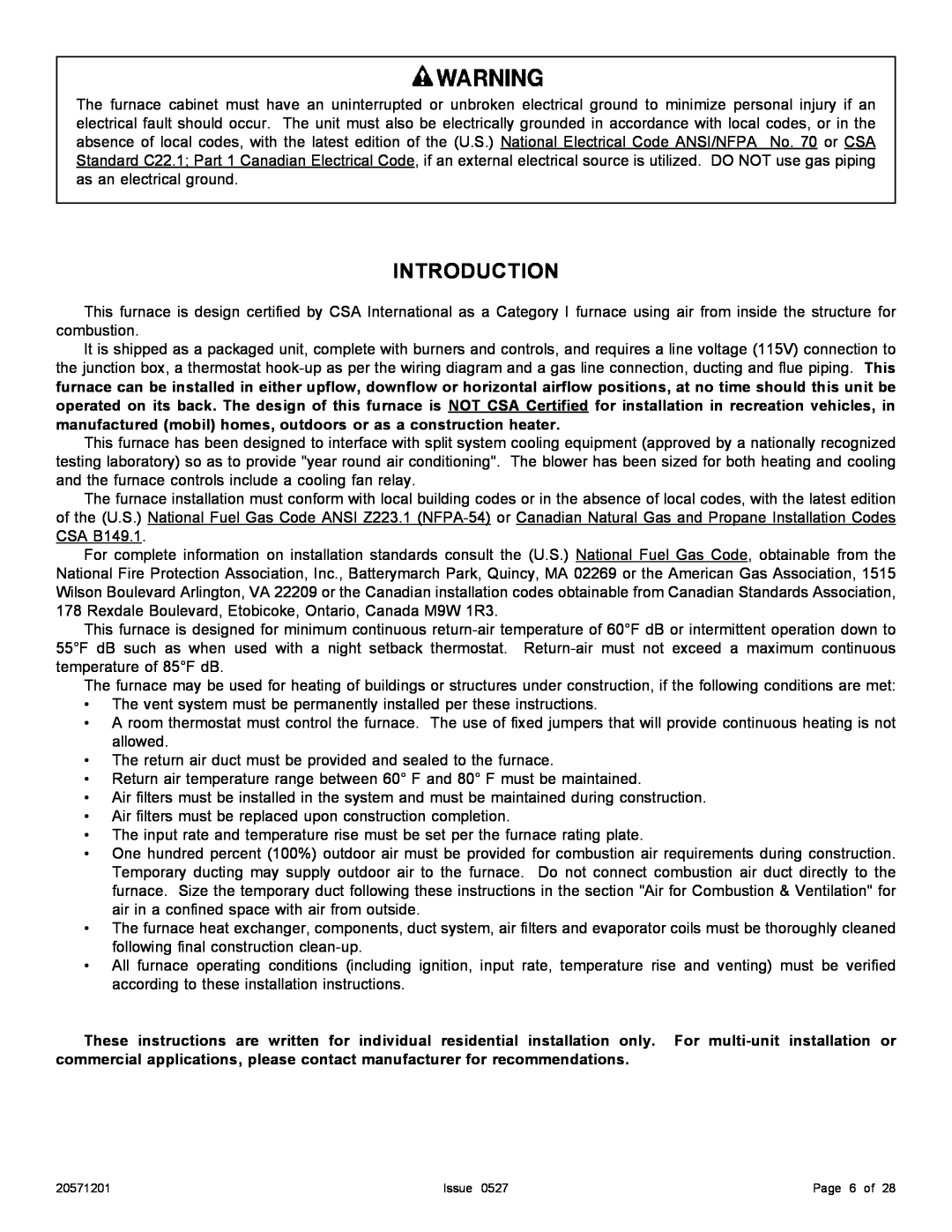
The furnace cabinet must have an uninterrupted or unbroken electrical ground to minimize personal injury if an electrical fault should occur. The unit must also be electrically grounded in accordance with local codes, or in the absence of local codes, with the latest edition of the (U.S.) National Electrical Code ANSI/NFPA No. 70 or CSA Standard C22.1; Part 1 Canadian Electrical Code, if an external electrical source is utilized. DO NOT use gas piping as an electrical ground.
INTRODUCTION
This furnace is design certified by CSA International as a Category I furnace using air from inside the structure for combustion.
It is shipped as a packaged unit, complete with burners and controls, and requires a line voltage (115V) connection to the junction box, a thermostat
This furnace has been designed to interface with split system cooling equipment (approved by a nationally recognized testing laboratory) so as to provide "year round air conditioning". The blower has been sized for both heating and cooling and the furnace controls include a cooling fan relay.
The furnace installation must conform with local building codes or in the absence of local codes, with the latest edition of the (U.S.) National Fuel Gas Code ANSI Z223.1
For complete information on installation standards consult the (U.S.) National Fuel Gas Code, obtainable from the National Fire Protection Association, Inc., Batterymarch Park, Quincy, MA 02269 or the American Gas Association, 1515 Wilson Boulevard Arlington, VA 22209 or the Canadian installation codes obtainable from Canadian Standards Association, 178 Rexdale Boulevard, Etobicoke, Ontario, Canada M9W 1R3.
This furnace is designed for minimum continuous
The furnace may be used for heating of buildings or structures under construction, if the following conditions are met:
•The vent system must be permanently installed per these instructions.
•A room thermostat must control the furnace. The use of fixed jumpers that will provide continuous heating is not allowed.
•The return air duct must be provided and sealed to the furnace.
•Return air temperature range between 60° F and 80° F must be maintained.
•Air filters must be installed in the system and must be maintained during construction.
•Air filters must be replaced upon construction completion.
•The input rate and temperature rise must be set per the furnace rating plate.
•One hundred percent (100%) outdoor air must be provided for combustion air requirements during construction. Temporary ducting may supply outdoor air to the furnace. Do not connect combustion air duct directly to the furnace. Size the temporary duct following these instructions in the section "Air for Combustion & Ventilation" for air in a confined space with air from outside.
•The furnace heat exchanger, components, duct system, air filters and evaporator coils must be thoroughly cleaned following final construction
•All furnace operating conditions (including ignition, input rate, temperature rise and venting) must be verified according to these installation instructions.
These instructions are written for individual residential installation only. For
20571201 | Issue 0527 | Page 6 of 28 |
